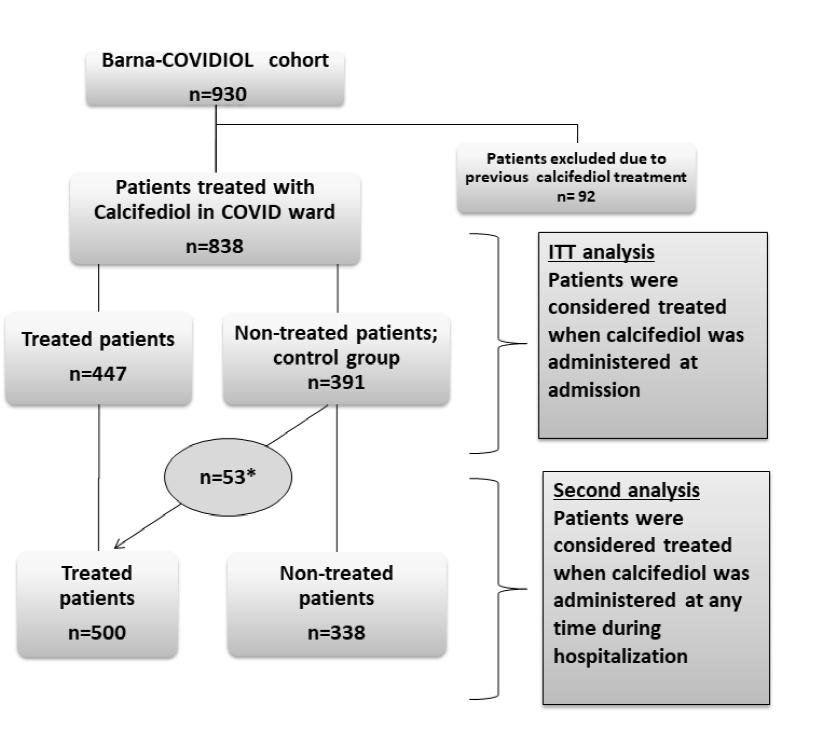
Remember this problematic study from February?
After questions were raised about the paper, it was pulled by the Lancet and disappeared off the preprint server it was on
This week IT WAS PUBLISHED 👀👀 1/n
After questions were raised about the paper, it was pulled by the Lancet and disappeared off the preprint server it was on
This week IT WAS PUBLISHED 👀👀 1/n
https://twitter.com/GidMK/status/1361063430745022467
2/n The paper is here. The authors and ethics approval are essentially identical, and the text is very similar. There are, however, some really odd differences between the publication and preprint academic.oup.com/jcem/advance-a…
3/n First off, the published version doesn't mention that this study was preprinted then retracted as far as I can tell
That's, um, not great. Less than ideal
That's, um, not great. Less than ideal
4/n Secondly, the study type has changed. The preprint claimed to be "randomized", the published study identifies itself as an observational trial 



5/n This is a pretty big issue, because being a randomized trial was what made this study go viral in the first place
As an observational paper, it's really not very strong
As an observational paper, it's really not very strong
6/n In essence, people who were assigned to different wards in a hospital were either given or not given calcifediol based on which ward they were sent to. People sent to the calcifediol wards had a lower chance of going to ICU 

7/n The authors controlled for some comorbidities and a few other things in their analysis, but at a basic level there are many potential confounding factors in this sort of trial design that make it hard to draw conclusions from the results 

8/n So as an observational trial, it was fine but not particularly conclusive
But then you start looking at the numbers, and things get weird
But then you start looking at the numbers, and things get weird
9/n Firstly, the authors changed the sample between the preprint and publication. They report excluding 10% of their total sample because they'd received treatment before the study, which was not true in the preprint 

10/n Now, it's a bit weird to exclude people who've taken vitamin D supplements 3 months ago from this sample anyway - most of the people were deficient in vitamin D despite the supplements - but there's also more that's strange here
11/n For one thing, even though people have been EXCLUDED from the trial, the control group has...increased?
379 in the preprint, 391 in the publication

379 in the preprint, 391 in the publication


12/n This is not explained - the only thing mentioned is that 92 people were excluded ~prior to the trial~
Were people moved from treatment to control? How does that happen in a prospective cohort study?
Were people moved from treatment to control? How does that happen in a prospective cohort study?

13/n Table 1 also has some mistakes. For example, the obesity numbers and percentages have been copied in wrong 

14/n The figures in Table 1 are also just a bit...odd? 20% diabetes, 30% dyslipidemia, but only 9% of people with BMI>30? Are those obesity values just an error perhaps?
15/n There are also tons of strange small differences between the preprint and the published study. 80/379 died in the control group in the preprint, but 82/391 died in the publication
None of this is explained 🤔
None of this is explained 🤔
16/n At this point I just honestly don't know what to make of the research. As an observational study, it's not very meaningful (if nothing else, there's no control for or discussion of how patients were allocated to the wards)
17/n As a randomized study that was retracted from SSRN after being rejected from the Lancet, it is pretty problematic that the preprint isn't mentioned at all in the published work, and that the differences aren't really explained
• • •
Missing some Tweet in this thread? You can try to
force a refresh
















